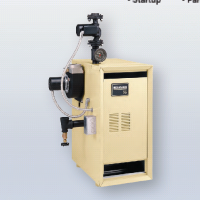Alternety
Like an engineer
The house is large. Two floors and 3 outside areas. Boiler is a WM series 2 110 boiler. I have a large number of individually controlled loops. External links also need a good flushing.
What I need to know is the best approach to drain and clean the system; then put in water and protective chemicals. There is a lot of segments and controls. I have participated in flushing the system before and as I recollect we essentially allowed water in the lowest area to be forced up to the system. Then opening valves on each loop one at a time with a hose out the window from the manifolds.
I can try to flush isolated pieces. Water heater tank, buffer tank, boiler and then isolate the remaining equipment.
I would think I would have more of a problem with captured air and a hose out the upstairs window. The alternative is drain everything (with air) and start from scratch. Adding treatment chemicals when the system is refilled.
I could really use some ideas on how to continue.
What I need to know is the best approach to drain and clean the system; then put in water and protective chemicals. There is a lot of segments and controls. I have participated in flushing the system before and as I recollect we essentially allowed water in the lowest area to be forced up to the system. Then opening valves on each loop one at a time with a hose out the window from the manifolds.
I can try to flush isolated pieces. Water heater tank, buffer tank, boiler and then isolate the remaining equipment.
I would think I would have more of a problem with captured air and a hose out the upstairs window. The alternative is drain everything (with air) and start from scratch. Adding treatment chemicals when the system is refilled.
I could really use some ideas on how to continue.

